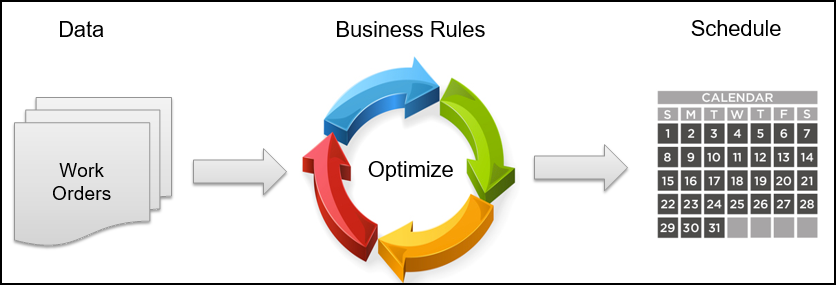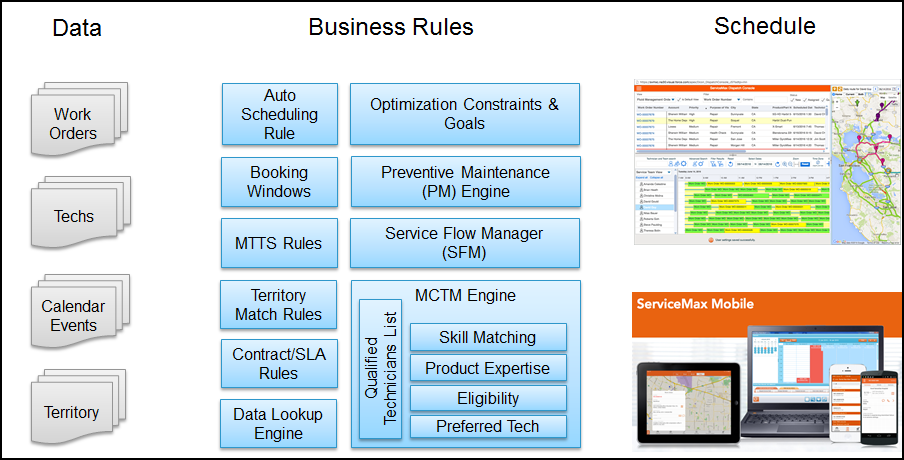Schedule Optimization Architecture
This section describes the high-level functional flow in Schedule Optimization. It lists the various components of Schedule Optimization, input information used by Schedule Optimization, and describes how scheduling is performed by the optimizer engine.
The following diagram depicts the high-level functional flow of Schedule Optimization.

You can configure the Schedule Optimization engine to take several factors into consideration while scheduling. The schedule Optimization engine produces the most optimized service dispatch schedule for your organization.
The following illustration describes the Schedule Optimization architecture in detail. The data from the business organization is processed according to the defined business rules, to generate an optimized schedule for your service teams.

Highlights of the Schedule Optimization architecture are:
• Schedule Optimization consists of various tools to cater to varying degrees of sophistication needed in dispatch management. The capabilities include:
◦ A rule-based assignment engine for direct and immediate assignment of work orders to technicians, queues, or dispatchers.
◦ An advanced optimization engine that delivers automatic scheduling of work orders to technicians considering various constraints and preferences.
◦ The multi-criteria technician match (MCTM) engine takes factors such as skill match, eligibility, and technician preference (preferred, mandatory, or excluded technicians) and produces a qualified technicians list (QTL).
• Depending upon their requirements and suitability, organizations can deploy and configure it to meet their dispatching requirements.
• The fundamental setup required is a thorough and accurate definition of your service organization. Specifically, the service organization must be represented as service territories and service teams. Dispatch process definition relies upon the completeness of the service organization setup.